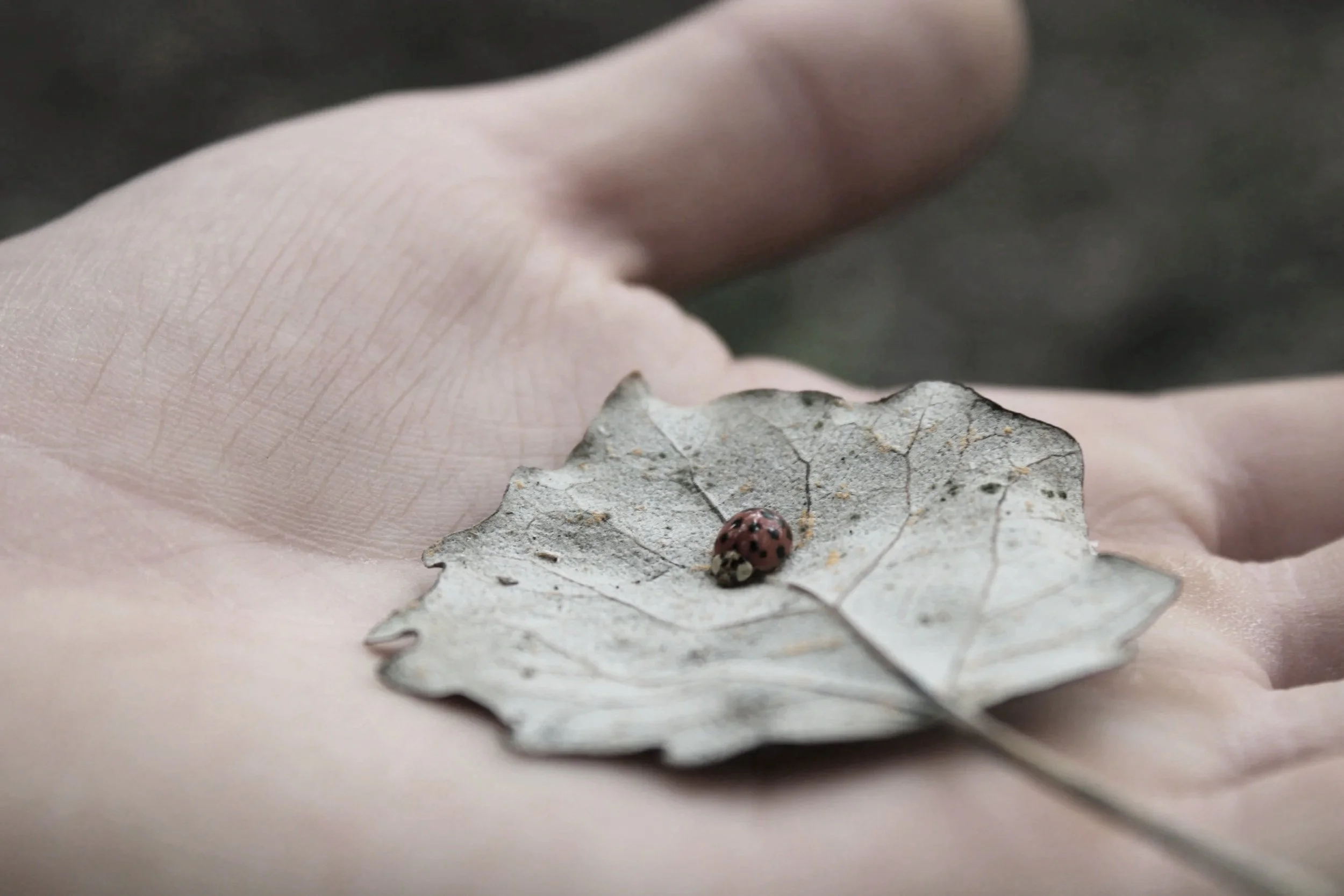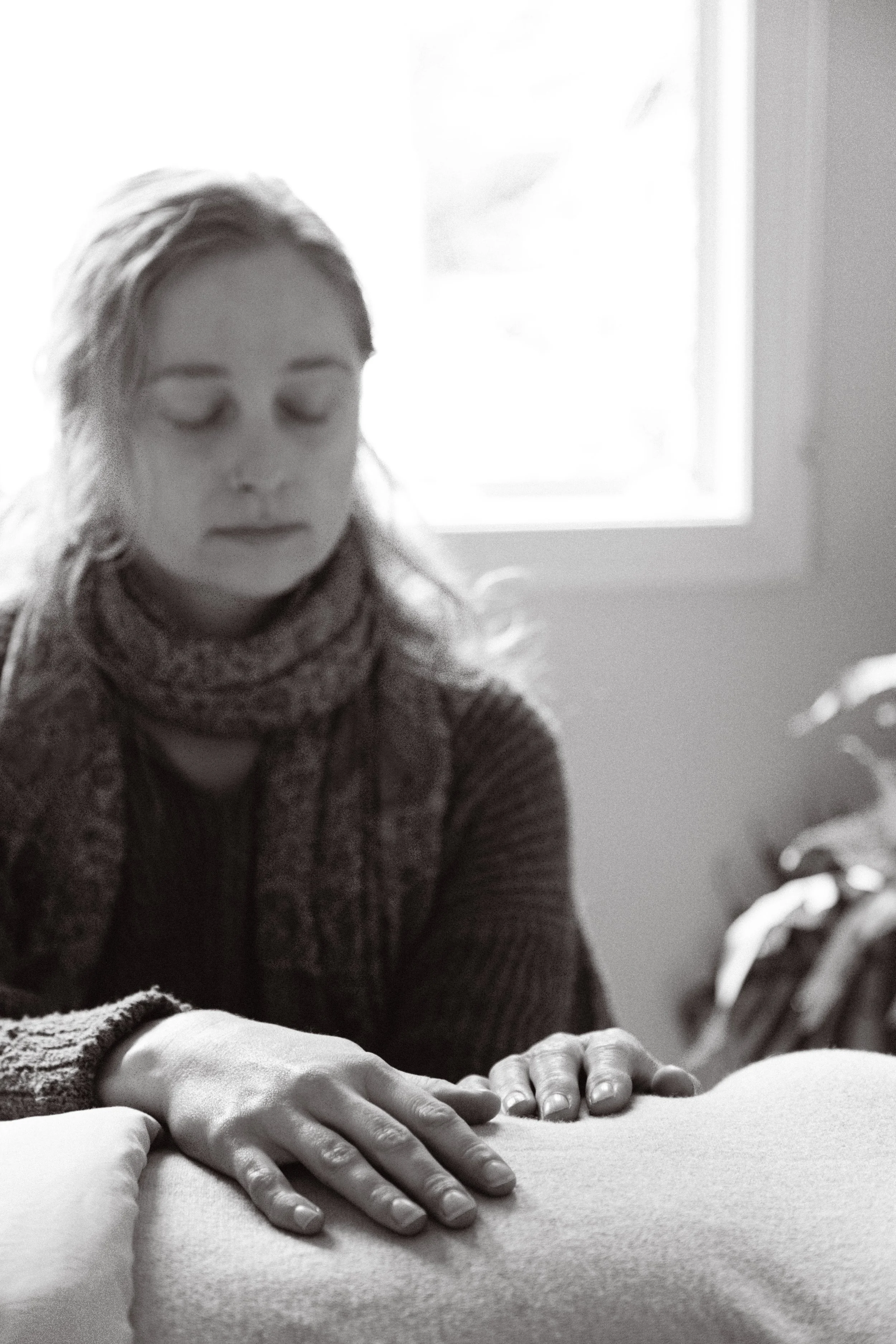
“Health is never lost; it centers our experience. Truth is found in the depth of our listening...Past and future are holographically enfolded within the present. Healing occurs in this eternal present.”
- Franklyn Sills
Biodynamic Craniosacral Therapy
Biodynamic Craniosacral Therapy (BCST) is a gentle, hands-on therapy that supports the body’s natural ability to find health and self-regulate. Grounded in osteopathic principles, BCST works with the subtle rhythms and movements within the body—particularly in the nervous system, fascia, and fluids—to release tension, calm the mind, and promote deep states of relaxation.
The craniosacral system includes the brain, spinal cord, cerebrospinal fluid, and the membranes and connective tissues that surround them, though BCST works with the entire body as an integrated whole.
Using light, non-invasive touch, I palpate your body to perceive your current physiology and inner rhythms and help guide it toward greater ease and coherence. Many clients experience relief from chronic pain, stress, trauma, anxiety, and other physical or emotional imbalances.
During a session, I will gently place my hands on different areas of your body, creating a sustained, still, and quiet state of presence. Sessions are client-led, meaning your body always leads the way and guides what happens.
BCST focuses on contacting the health that is always present in the body. Though we can work with a wide range of pathologies, the primary orientation is toward overall well-being and integration, supporting you as a whole person.
By orienting to the original forces that create life, the whole person is seen, heard, and held in their most powerful and eternal essence. This is a profoundly peaceful state of being, where long-held patterns of tension, dysfunction, or freeze can thaw, unravel, and soften—creating greater ease, movement, and vitality throughout the system.
This work recognises that all the information necessary for healing is already contained within the physical, emotional, and mental memory of the body. Health is like a blueprint laid down at the moment of conception. When this is gently witnessed, through love, patience, and attuned touch, the intelligence within can reawaken and access places that have been buried beneath years and layers of life.
BCST is highly trauma-informed and offers a safe, non-invasive way to process unresolved or overwhelming experiences. When these experiences haven’t had a chance to fully integrate at the time they occurred, they can become stored in the body’s tissues. BCST provides space for somatic and emotional resolution of these patterns.
Informed by the principles of living anatomy, BCST explores how tissues, fluids, and structures relate in the living, breathing body. We work with the bones, fascia, fluids, and whole-body systems to support greater internal organisation. BCST is particularly interested in the nervous system, cellular intelligence, and the power of relational, respectful touch.
What can BCST help with?
Stress, overwhelm, and nervous system dysregulation
Chronic pain, fatigue, or physical trauma
Emotional processing or post-traumatic healing
Anxiety & panic attacks
Depression & dissociation
Fibromyalgia, Inflammation and tension related conditions
Headaches and migraines
Head and facial trauma
Support during pregnancy and post-partum
Insomnia and sleep disturbances
Tinnitus and TMJ Issues
Post-Surgery or injury support
Life transitions or a desire for deeper self-awareness and embodiment
BCST is a safe and effective therapy for people of all ages, and all care is taken to respect and consider your personal needs.

Origins and History of BCST
Biodynamic Craniosacral Therapy (BCST) evolved from the broader field of Craniosacral Therapy, which was originally developed by Dr. William Sutherland, an osteopath, in the early 20th century. Sutherland discovered subtle rhythmic movements in the cranial bones and their associated membranes and fluids, which he believed influenced the health and function of the entire body. This led to the practice of Osteopathy in the cranial field.
In the late 1970s and 1980s, John Upledger further developed Craniosacral Therapy, bringing it into wider clinical practice with a hands-on approach focused on detecting and releasing restrictions within the membranes and fluids around the craniosacral system using subtle movement, which he claimed could help with a variety of conditions. Upledger laid the foundation for CST to become a widely respected and recognised alternative therapy.
Biodynamic Craniosacral Therapy, as it is practiced today, was developed by Franklyn Sills in the late 20th century. Sills expanded upon traditional craniosacral methods by integrating a holistic, deeply embodied philosophy that recognises the body’s inherent capacity for healing and regulation. The term “biodynamic” reflects this emphasis on the dynamic, living processes within the body—the subtle forces and rhythms that express the body’s vital intelligence.
BCST prioritises a respectful listening to the body’s natural rhythms and an orientation toward health rather than pathology. Practitioners work with the “Breath of Life,” a foundational concept referring to the subtle, organising life force that flows through the body, facilitating health and balance on physical, emotional, and energetic levels.
This work has continued through a lineage of BCST practitioners worldwide including Michael Kern, Cherionna Sills, Steve Haines, Ged Sumner (Body Intelligence) and my direct teachers Lolly Dadley-Moore, Megan Arnel, Tejaaswinny Naakra and Amanda Dickie.
Today, BCST is practiced as a gentle, trauma-informed therapy that supports nervous system regulation, emotional processing, pain relief, and overall well-being, supporting clients of all ages.

